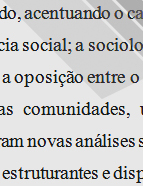

................................
He compares the government in Lisbon with the Council of Portugal (Madrid), as well as the coordination with the three secretariats of state. He makes an inventory of the royal administration, with emphasis on the Council of Finance and the Council of India (in his view a copy of the Supreme Council of the Indies, 1542) and reviews the changes during the reign of King John IV, reviewing councils, courts, boards, the model of dispatch and the consultation process. He did the same with his texts on the Cortes: As Cortes de 1385, 1951; As Cortes de Leiria de 1254, 1954; Subsídios para a História das Cortes Medievais Portuguesas, 1961. He was also interested in municipal powers, producing works of great quality that are still relevant today, such as A Antiga Organização de Mesteres ma Cidade de Lisboa (The Ancient Organisation of Guilds in the City of Lisbon), 1942; A Administração Municipal de Lisboa durante a 1.ª Dinastia (The Municipal Administration of Lisbon during the 1st Dynasty) (1109-1383), 1950; Regimento dos Oficiais das Cidades, Vilas e Lugares Destes Reinos (Regulations for Officials of Cities, Towns and Places in these Kingdoms), 1955; The Municipality of Lisbon in the Crisis of 1383-85, 1953. He also published “The Municipality in Portugal” (Municipal Journal, no. 4, Lisbon, CML, 1940). In terms of constitutional law, mention should be made of A Brief History of Portuguese Constitutions, 1965; History of Portuguese Law, 1941 and Lessons in the History of Portuguese Law, 1961.
The doctoral thesis of Francisco Paulo Mendes da Luz (1920/…), O Conselho da Índia (The Council of India), 1952, represents a new style in that it is a long monograph (649 pp), well documented with archival and bibliographic material, and is still required reading today. It begins by analysing the role played by the Escrivão da Puridade (Pedro de Alcáçova Carneiro), who held the position of Secretary of Indian Affairs (from 1530) until he was removed (1568) and replaced by three secretaries of state (India, Kingdom and Dispatch of Mercies). It then deals with the reign of Philip I, when the vedorias (tax offices) were abolished and the Council of Finance (1591) was created to centralise the administration of the royal treasury’s income. It describes the structure and functioning of the Council of Finance and the Board of Finance and the return to the three vedorias under King John IV (1641). On the Council of the Indies, he begins by referring to its creation (1604), structure and powers, innovatively analyses the conflict with the Council of the Treasury, which was political and administrative in nature, lists the main problems until the Overseas Council gained autonomy (1613), although it was eventually abolished due to political pressure from the Finance Council and the Board of Conscience and Orders (1614).
This work is financed by national funds through FCT - Foundation for Science and Technology, I.P, in the scope of the projects UIDB/04311/2020 and UIDP/04311/2020.
